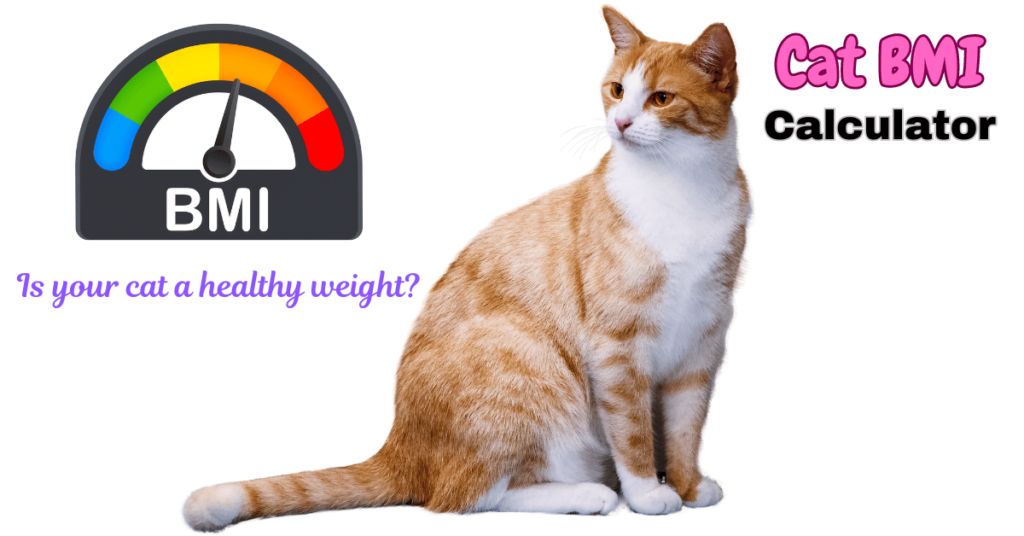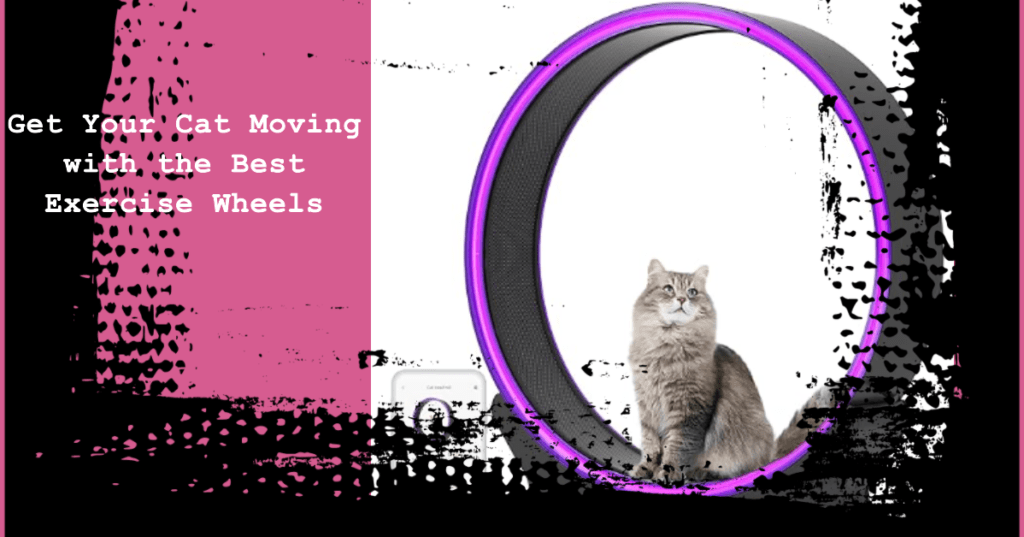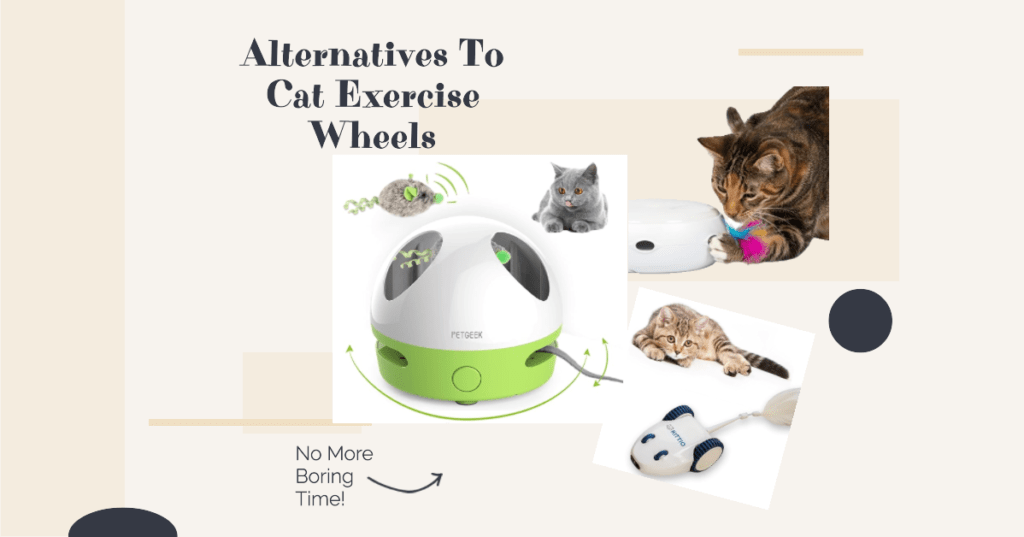This post contains affiliate links and I will be compensated if you make a purchase after clicking on my links.
Winter Wellness for Cats
As the chill sets in, many pet owners notice that cats gain weight in winter. But why does this happen, and what can you do about it?
Observations reveal a curious trend: cats gain weight in winter, a phenomenon not entirely divorced from the evolutionary adaptations seen in the animal kingdom.
This seasonal challenge, while seemingly benign, can lead to health complications if not managed proactively. Today, we’re delving into the evolutionary underpinnings of winter weight gain and unraveling strategies to keep your cat’s waistline in check before the fluff gets out of control.
Cats Gain Weight in Winter: Understanding Why
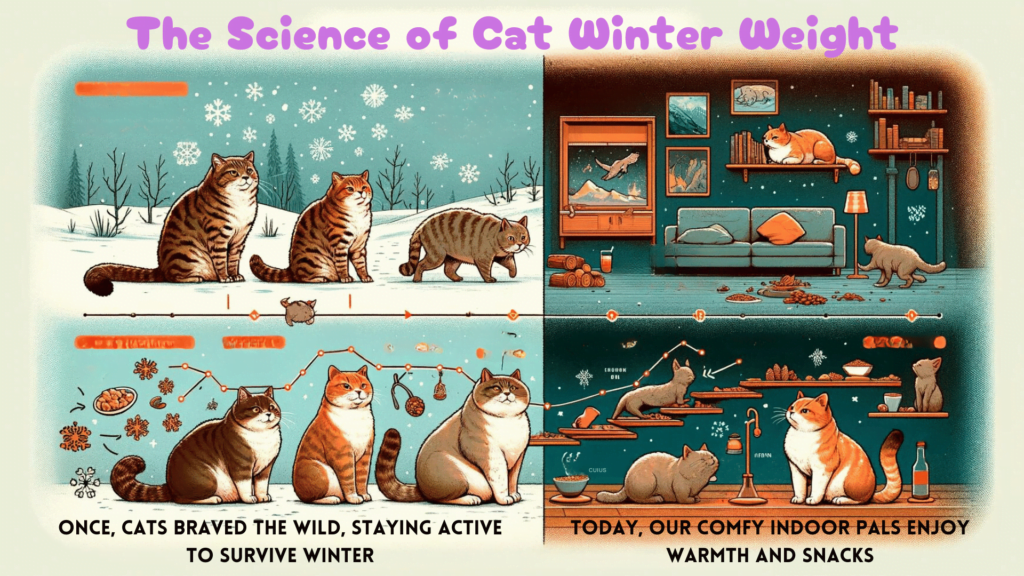
Evolutionary Advantage: From Wild Ancestors to House Cats
Historically, winter has been a season of scarcity. In response, animals evolved to store fat to survive through months when food was hard to come by. This instinctual drive to overeat as the cold approaches is deeply embedded in the animal psyche, including that of our domesticated cats.
While this may have served an essential survival function for their wild ancestors, the modern house cat’s biggest hunt is often no further than the food bowl.
Due to Evolutionary Programming
Unlike their ancestors, our pampered pets aren’t exposed to the harsh realities of a cold winter. They live in the constant summer of central heating and endless food supply, which diminishes their need for a winter fat reserve.
However, their evolutionary programming hasn’t caught up with their living situation, leading to decreased physical activity but not a decreased appetite, thereby contributing to weight gain during the colder months.
The key to managing winter weight gain in cats is not allowing it to happen in the first place. Once a cat has put on extra weight, shedding it becomes a much tougher battle.
Assessing Your Cat’s Weight
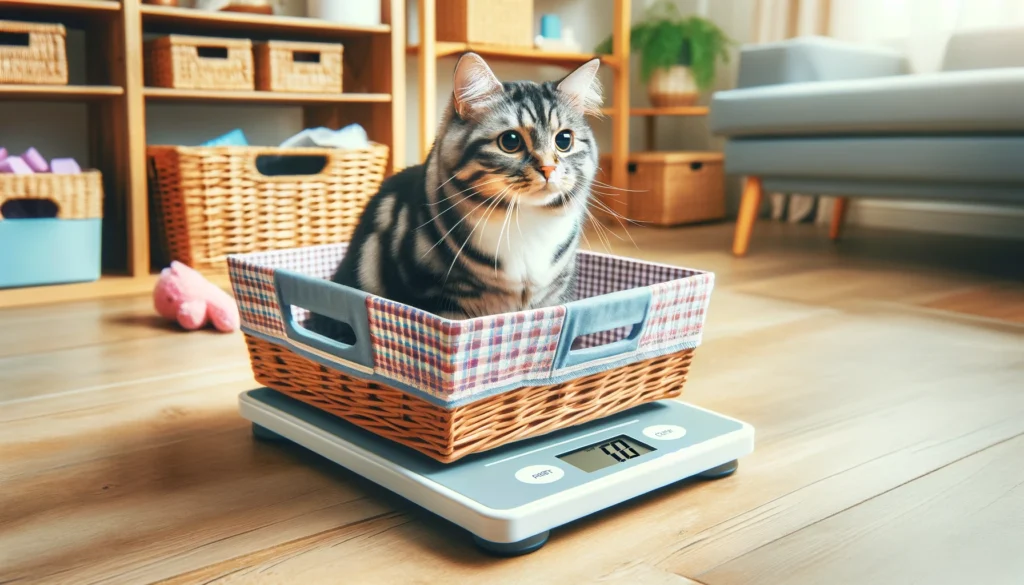
Before we pounce into the flurry of activities and diet tweaks to keep your cat svelte and spry, let’s start with a baseline: how do you tell if your whiskered companion is already flaunting a bit more fluff than is healthy?
1. Visual Observation
First off, observe. Does your cat have a visible waist? When you look at them from above, you should see a slight indentation behind the ribs—a feline hourglass figure, if you will.
2. Body Condition Score (BCS)
Using a Body Condition Score (BCS) chart offers a more standardized method of assessment. By feeling your cat’s ribs, spine, and overall fat coverage, you can compare your observations to the BCS chart, which ranges from 1 (emaciated) to 9 (obese), with 5 being ideal.
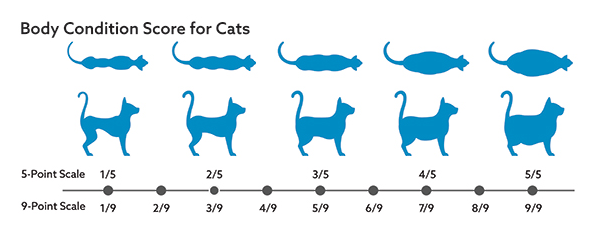
3. Cat BMI Calculation
Lastly, use our Cat BMI Calculator for a precise assessment. By inputting your cat’s body weight and measurements, you can determine their BMI and see if they fall within the normal, overweight, or obese range. This complements other methods and gives a comprehensive view of your cat’s health.
4. Weighing Your Cat
Weighing your cat on a scale provides another objective measure. This method allows you to track your cat’s exact weight and compare it with the recommended range for their age and breed. It’s a straightforward approach to ascertain whether your cat’s weight is in the healthy spectrum.
Frequency: A good rule of thumb is to weigh your cat once a month. This frequency allows you to track any significant changes in their weight without causing too much stress for either of you.
Dietary Strategies for Weight Management
1. Give Accurate Portions
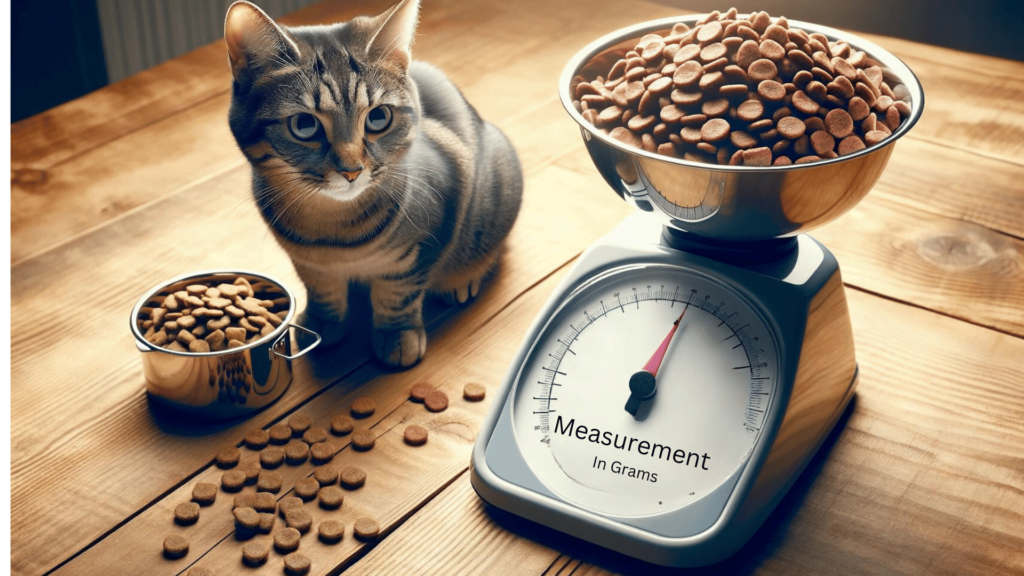
A cornerstone of managing your cat’s weight is the vigilant control of food intake, a practice that becomes even more crucial during the winter months. As the instinct to bulk up for the cold kicks in, regulating how much your furry friend eats can help maintain a healthy weight.
Utilizing measuring cups or scales ensures that each serving is precise, preventing the all-too-easy mistake of overfeeding.
2. Switch to Scheduled Feeding
Transitioning from a grazing to a scheduled feeding regimen offers multiple benefits for weight management. Fixed meal times not only regulate calorie intake but also mimic the natural feeding patterns of cats in the wild, where meals are caught and not constantly available. This structure helps mitigate the tendency to snack out of boredom, a common culprit behind winter weight gain.
Pro Tip: Smart Feeders are a great solution to effortlessly manage feeding schedules, even when you’re away from home.
3. Fun Feeding for Winter Weight
Incorporating interactive feeding techniques, such as food puzzles and hiding treats around the house, can turn mealtime into a stimulating activity. These methods encourage your cat to engage in natural hunting behaviors, requiring physical effort to access their food. This not only helps in managing caloric intake but also keeps your cat mentally sharp and physically active, addressing both the dietary and exercise components of weight management.
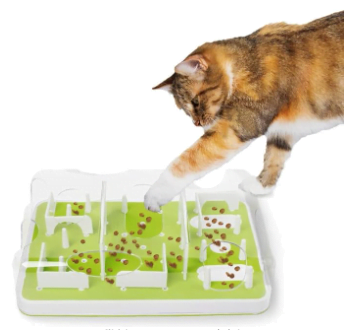
4. Emphasize on Wet, High-Fiber Food
Winter might be the purrfect time to tip the scales towards wet food.
Why?
Not only is it packed with the hydration they need during the dry (due to heated homes), chilly months, but it’s also usually lower in calories—a win-win for maintaining a healthy weight. Plus, opting for wet food high in fiber can help your cat feel fuller longer, supporting digestion and keeping those winter pounds at bay.
5. Boosting Hydration in Winter
Keeping your cat well-hydrated during the chill of winter can be challenging, as cats naturally tend to drink less—and even more so when the air turns dry and heated indoors.
An innovative solution? Cat fountains!
Cats often favor cat fountains over traditional bowls. Proper hydration not only boosts your cat’s metabolism but also promotes a feeling of fullness, potentially reducing their temptation to indulge in extra treats.
6. Smaller Portions in Winter
During the colder months, it might be tempting to indulge your cat with extra treats, especially when they’re giving you those big, soulful eyes. However, this is the time to be extra vigilant about portion control. A slight reduction in their daily calorie intake can make a significant difference over time. Think of it as fine-tuning their fuel intake for the winter’s slower pace.
Adjust for Decreased Activity in Winter: For cats that are noticeably less active in winter, consider a slight reduction in daily calorie intake to prevent weight gain. This doesn’t mean a drastic cut; a small adjustment, such as a 5-10% decrease (e.g., reducing by 10-20 calories per day for a 10-pound cat), can be effective. This is especially relevant for spayed or neutered cats, who generally require fewer calories.
Boosting Physical Activity
Despite their penchant for long naps, daily play sessions are crucial for keeping your cat active and preventing winter weight gain – on average 30-40 minutes of daily play. Interactive play that simulates hunting can engage their natural instincts, making exercise fun and rewarding.
1. Exercise Gadgets and Toys
Technology offers a plethora of options to keep your cat moving. Exercise wheels, for instance, provide a fantastic outlet for your cat’s energy, especially for those that spend most of their time indoors. Similarly, automated laser toys can keep your cat chasing and leaping, even when you’re not around. These gadgets not only entertain but also contribute significantly to your cat’s daily physical activity quota.
2. Simple Homemade Cat Fitness Ideas
Not all exercise solutions need to be high-tech. DIY projects and simple activities can also effectively keep your cat active whilst indoors. Creating obstacle courses using cardboard boxes or crafting homemade toys can offer endless entertainment. Even something as simple as a string tied to a stick can engage your cat in vigorous play. The key is to be creative and use everyday items to encourage your cat to move, jump, and explore, keeping them fit and healthy throughout the colder months.
Environmental Enrichment
1. Indoor Cat Enrichment
To counteract the sedentary lifestyle that contributes to winter weight gain, enriching your cat’s environment to promote activity is essential. Cat trees, shelves, and window perches not only enhance your home’s vertical space but also encourage your cat to jump, climb, and explore.
2. Catios for Winter

For those who have the space and resources, safe outdoor enclosures, also known as ‘catios,’ can provide the best of both worlds: the enrichment and excitement of the outdoors while keeping your cat protected from predators and other dangers.
These enclosures allow cats to experience the changing seasons, watch wildlife, and engage in natural behaviors, contributing to their physical well-being and mental health.
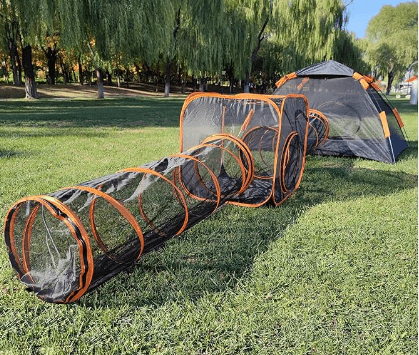
Play: Bonding and Health
Beyond the health benefits, play serves as a critical component in strengthening the bond between you and your cat. These shared moments of joy and fun foster a deeper connection, enhancing your relationship and ensuring your cat feels loved and secure. Engaging in play reflects your cat’s natural behaviors, providing a sense of fulfillment and satisfaction that goes beyond mere physical activity.
Blueprint for Preventing Winter Weight Gain in Cats
Understanding the evolutionary reasons behind cats’ tendency to gain weight in winter is the first step in combating this issue. However, knowledge alone isn’t enough.
Proactive steps, such as strategic feeding, ensuring regular play, and enhancing your cat’s environment, can significantly impact your cat’s health and well-being. While certain factors may be beyond our control, the decisions we make for our pets can make all the difference.
Meet Sean, a fintech whiz with a penchant for pet purrs and blockchain buzz. After a decade of fintech feats, Sean’s tech talents leaped from ledger lines to litter lines, driven by a passion for pets and a vision for a more connected pet care community. With three critter companions as co-pilots, Sean launched this blog to share a treasury of pet-friendly tech tips and tales.



